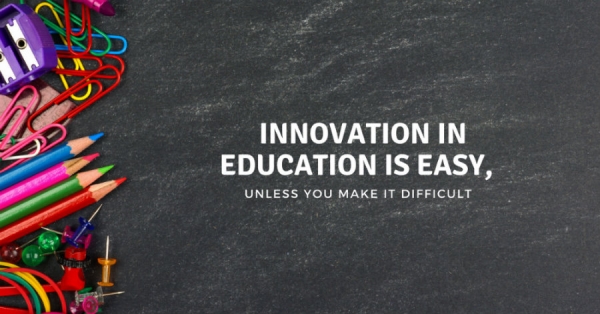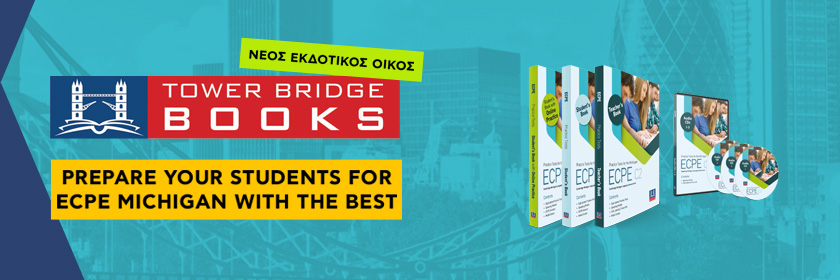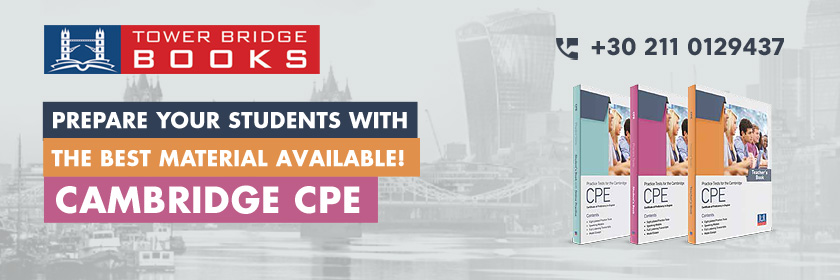English language teaching is evolving all the time, particularly alongside advances in technology. But what changes have had the biggest impact on teachers in recent years? Here are what appear to be the top ten innovations for teachers, in no particular order.
1. Digital platforms.
When we discuss innovation, we often immediately think of the internet and what we can now do online. Facebook and especially Edmodo, which creates a safe online environment for teachers, students and parents to connect, are popular with teachers.
Cloud-based tools like Google Docs have also become indispensable. For teacher Tyson Seburn, it’s 'where I've moved so much of individual and (because of its functionality) collaborative writing with students...'
The list of digital platforms is extensive and growing all the time. A multimedia manual like Digital Video by Nik Peachey (nominated for an ELTons award for innovations in teacher resources) can help teachers navigate the complicated, and sometimes overwhelming, world of digital resources, enabling teachers to create activities, lessons and courses from a range of digital tools.
2. Online corpora.
The use of corpora – large text collections used for studying linguistic structures, frequencies, etc. – used to be the privilege of lexicographers. But with most corpora now available online, and quite a few for free, teachers now have access to information about the way language is used in authentic texts and speech.
Teachers no longer have to panic when students ask them about the difference between ‘trouble’ and ‘problem’. And it's not just teachers who benefit. To find out if more people say ‘sleepwalked’ or ‘sleptwalk’ (for example), students can simply search the words on Google, which uses the internet as its corpus.
3. Online CPD (continuous professional development) and global staffroom.
The advent of the internet and the growth of social media have certainly allowed teachers of English from all over the world to form online communities that act like a huge global staffroom. Twitter and ELT blogging, for example, have 'opened up a network of people who can offer advice, support and ideas’, says Sandy Millin. Participants who are generous with their time, ideas, and contacts find they receive much in return.
4. Mobile learning and BYOD (bring your own device).
The development of mobile technology and the proliferation of smartphones have enabled many of us to access the internet and a huge variety of apps on the go. Learners benefit too, from apps like WIBBU, and podcasts like Luke’s English Podcast – Learn British English with Luke Thompson – nominated for an ELTons award in the category of digital innovation.
Teachers are also able to build on their teaching knowledge and skills by listening to podcasts like The TEFL Commute or join 50,000 teachers from more than 200 countries and watch webinars or archived videos of talks by TEFL teachers on EFL Talks. Both are nominated for an ELTons for innovation in teacher resources.
And if teachers and students are gaining so much from their mobile devices, why ban them from classrooms? It seems that getting students to bring their own devices to class is fast becoming a game-changer in ELT practice.
For teacher Ceri Jones, tools like WhatsApp and Padlet help build channels of communication beyond the classroom. She says: 'I often don’t have the hardware or the connectivity in teen classes to use the internet, so students using their own devices is great – and it means they have a record of the resources we've used to check back on after class...'
5. Communicating with people online.
The ability to communicate online with people outside the classroom via Skype and similar tools has enabled students to meet and interact with others in English. In monolingual classes (i.e., most English classrooms around the world), this could give much-needed motivation to students who otherwise might not have the opportunity to interact with anyone in English.
And as for teachers, the ability to converse with students face-to-face online has opened up a whole new market for Skype lessons and online classes.
6. Online authentic materials.
One of the biggest benefits of the internet for language learners is the sudden widespread availability of authentic resources. As David Deubelbeiss points out, this enables teachers to use 'content with messages students want to hear'. We can now access the daily news, watch trending videos on YouTube, read the latest tips on TripAdvisor… the possibilities are endless.
But with so much content available to us, choosing the right online materials is crucial for efficient and effective learning. Keynote by National Geographic Learning makes use of TED talks to develop a pedagogically sound approach to language learning, while Language Learning with Digital Video (Cambridge University Press) looks at how teachers can use online documentaries and YouTube videos to create effective lessons.
7. The IWB (interactive whiteboard )
The IWB started appearing in classrooms in the early parts of this century and has now become a staple of many classrooms in Britain and around the world. It allows us to save and print notes written on the board, control the classroom computer from the whiteboard, play listening activities on the sound system, use the screen as a slide for presentations, access the internet, and so on. The possibilities seem endless.
But the addition of an IWB to a classroom does not automatically make for a better learning experience. Indeed, unless teachers use them skilfully to complement teaching and learning, they are little more than a distraction.
As teacher David Dodgson explains, some people 'love the shiny stuff', believing that simply standing in front of an IWB is effective integration of education technology. It's not.
8. Dogme (or materials-light teaching)
For teachers like Matthew Noble, discovering the Dogme approach to language teaching was 'galvanising'. A communicative approach that eschews published textbooks in favour of conversational communication between learners and teacher, Dogme signals a departure from a one-size-fits-all approach to classroom materials.
For many teachers, this 'unplugged' approach represents a new way of looking at the lesson content, and the chance to break free from self-contained language points and give more time to student-generated language.
9. Students steering their own learning
Over the last couple of decades, learning has gradually been moving from a teacher-centred top-down approach to a student-centred, bottom-up one. The trend has accelerated rapidly in recent years with the growing quantity and quality of information on the internet. In many respects, this has changed the teacher's role from that of knowledge-transmitter to consultant, guide, coach, and/or facilitator.
One example is the 'negotiated syllabus', previously the domain of the business English teacher, who would conduct a needs analysis before tailoring a course to suit the participants. But we've come to recognise that there is nothing general about the general English learner either, and increasingly, teachers involve students in decisions about what to do in the classroom.
The ELTons-nominated Connections E-textbook (a project by Zayed University in the UAE) takes this a step further and involves the students in the design of their e-textbook, allowing them to make decisions on page layout and the clarity of task instructions.
10. Teaching soft skills and critical thinking skills
As English cements its position as the world’s lingua franca, many of our students are now learning English to oil the wheels of communication in the worlds of business, trade, education, and tourism. To enable our students to become better communicators, we should perhaps go beyond grammar, vocabulary and pronunciation, and look at helping them communicate effectively in international settings.
Learner resources nominated for an ELTons award this year include Richmond Business Theories (Richmond ELT), which features online resources that help teachers and students with soft skills like problem-solving, presentation skills, time management and decision-making. Academic Presenting and Presentations (Levrai and Bolster) looks specifically at the communication skills needed when making a presentation at college or university.
Another ELTons nominee is The Thinking Train (Helbling Languages), which believes in starting young. It helps children develop critical thinking skills that could support them not just in their English learning but in the learning of other subjects and life skills.
And perhaps it is this ability to think and reflect that will enable us as teachers and learners to take any innovation out there and make it work in our context for our students. After all, as a wise teacher of mine used to say, 'It’s never the tool, but the user that makes the difference.'










